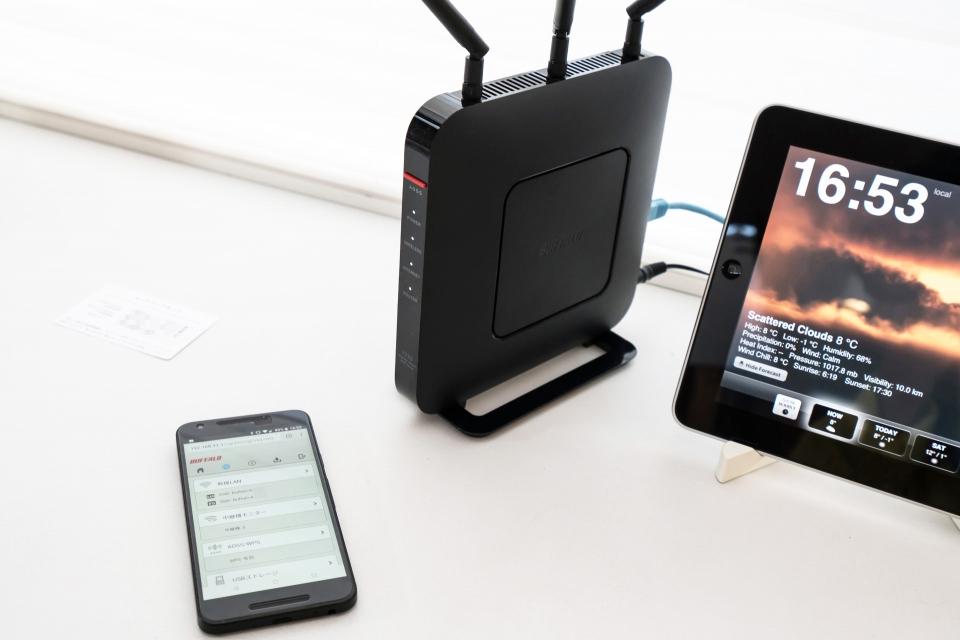Tips for setting Internet connection with Wi-Fi router
Refreshing at home Wi-Fi "I don't know"!
13th
「Refreshing at home Wi-Fi "I don't know"!」連載記事一覧
Last time, I used the SSID for the initial setting and the encryption key (Wi-Fi password), made a Wi-Fi connection for setting, and accessed the setting screen.When accessing this first setting screen, the connection part of the Internet line is determined, and the connection is displayed automatically, or the connection setting screen is displayed as necessary.This time, we will briefly explain this Internet line connection settings.The most certain thing is the information on the connection settings of the provider you are using, so I would like you to follow it.Here we will teach you general information.
Wi-Fiルーターに繋げたら、インターネットに繋がっているかチェックするThere are two types of Internet line connections for home [*1].It is a method of dynamically assigning an IP address by DHCP, and a method of entering a authentication ID and authentication password with a authentication connection called PPPoE.PPPoE is a method used to connect to the NTT East and West FLET'S line.

In the case of DHCP, there is no need to fill in the settings, and the DHCP server of the provider is automatically detected and the connection is completed.In the case of PPPoE, the input screen is displayed, so enter the authentication ID and authentication password according to the connection information paper provided by the provider and connect it.To put it simply, it is necessary to set the authentication information only for FLET'S line, and otherwise connects automatically.It is very rare, but please note that it is necessary to register a MAC address on a local CATV line.
Wi-Fiルーターにログインすると、自動的にインターネット接続設定が始まるケースが多い。TP-Linkのスマホアプリ「Tether」を使った初回接続時の回線設定画面PPPoEの接続設定画面例。各社とも似たような画面でユーザー名とパスワードを入力する。バッファローのWi-Fiルーターでの例In addition, IPv6 IPOE connection such as V6 plus on the FLET'S line (IPv6 PPPoE connection requires a compatible device) or IPv6 connection with DHCPV6 has a contract between the provider side and IPv6, and the Wi-Fi router is also on IPv6.If it is supported, it will be connected at the same time when the normal connection (IPv4) is completed.At the moment, not all accesses in IPv6 can be covered yet, so it is basically used (dual stack) at the same time as IPv4.By the way, it is often introduced to increase the speed to IPv6 and increase the speed, but this is simply that the speed of the IPv6 line can increase the speed, so it is a high -speed reason for the IPv6 connection.do not have.Let's explain the opportunity again about IPv6.
[*1]… There are other connection methods such as fixing the IP address by fixing the IP address or using a VPN connection (IPSEC/L2TP).These are mainly used in business lines, but are excluded here.If you set it manually, it may be displayed as an option, but these can be ignored.
In some cases, regardless of the connection method, the router has already been moved and has been connected to the line.This is especially true for IP phones, such as the FLET'S optical line, which contracts for IP phones.In this case, the DHCP server of the router is sensed, and the router operates to connect to the access point mode automatically, or the router operates in double.Let me know how to solve this double router later.Either way, if the router is running in the previous stage, the net connection is automatically completed.
What I want to do after the line connection is the update to the latest firmware [*2].Firmware may be updated for security measures.It usually offers a function to click the button to check whether it is the latest firmware.
[*2] ... The firmware is software that operates the equipment.It's similar to a smartphone OS update.For example, recently, vulnerabilities have been found in the WPA2 of the encryption protocol, which has no effect on the base unit (it has an effect when used as a representative).
「Tether」アプリで設定が終わり、回線接続が完了したところ最新ファームウェアのチェックと更新は簡単にできるので、インターネットに接続後にまず終わらせておくThis lesson (point)
The net line is automatically connected except for the FLET'S line PPPoE, and enter the authentication ID and authentication password.After connecting to the internet, check the firmware update.
「Refreshing at home Wi-Fi "I don't know"!」連載記事一覧
Shunichi Murakami
Born in 1965.Graduated from Meiji University Faculty of Letters.He worked as a photographer, American wandering life, and computer magazine editor, and has been an IT -free writer since 1995.He has written a lot in digital books, magazines, and web media, including photography, music production, DTP, Internet & network, wireless LAN, smartphone, and digital gadgets.He loves music production, travel, architectural appreciation, wireless, motorcycle, and open cars.